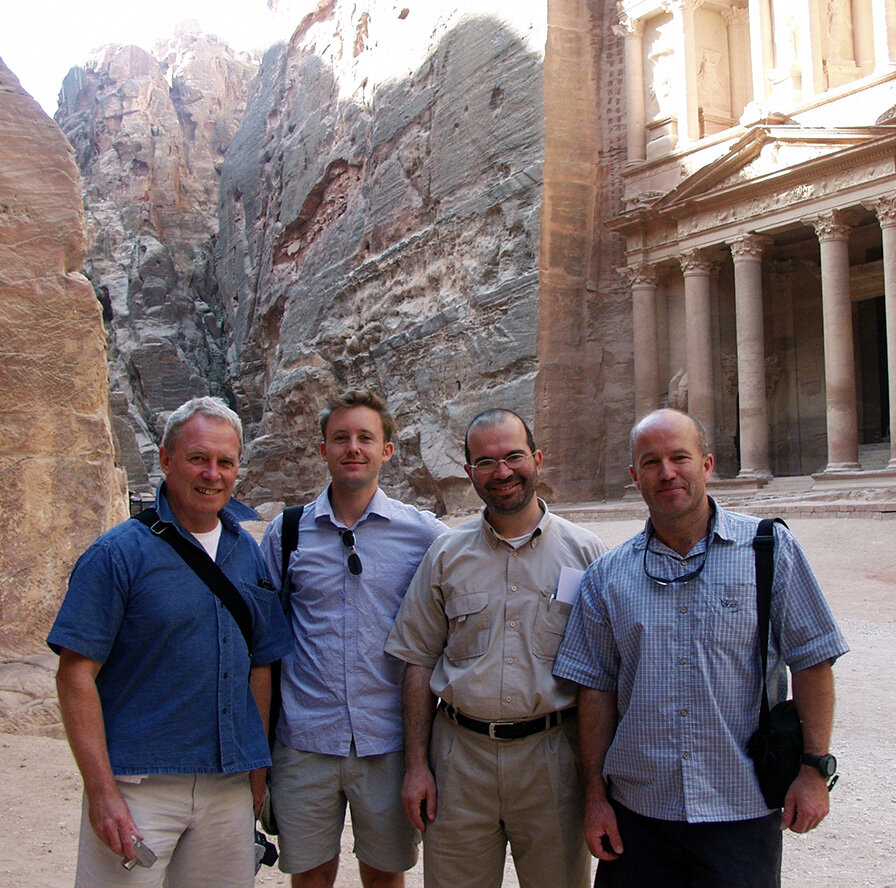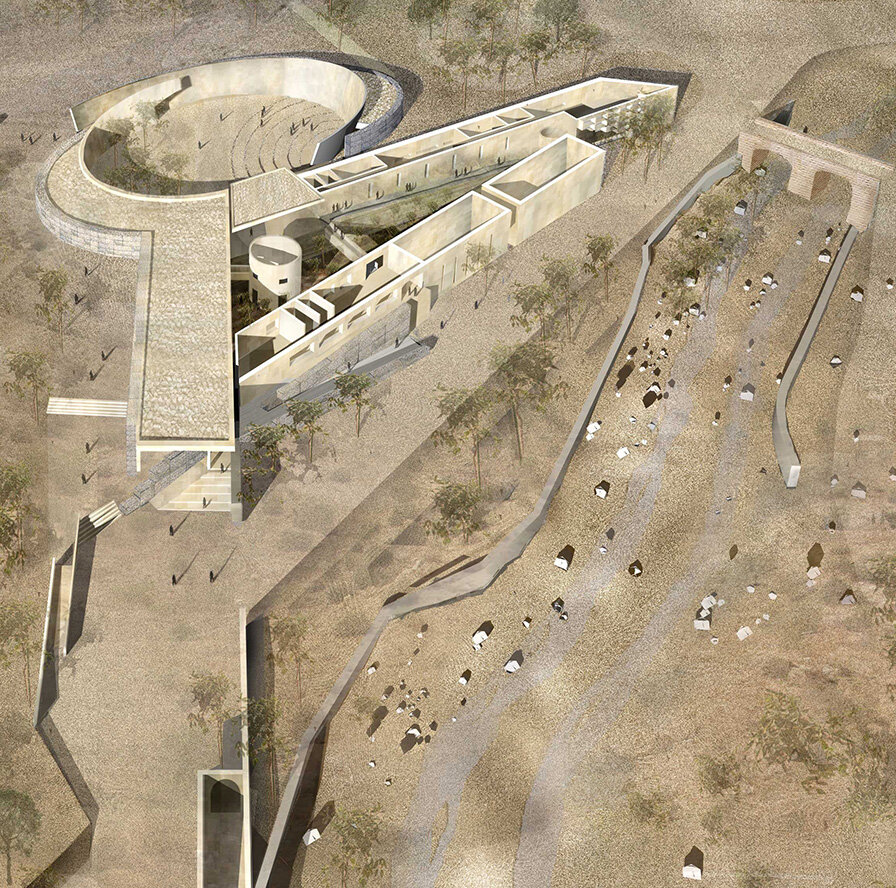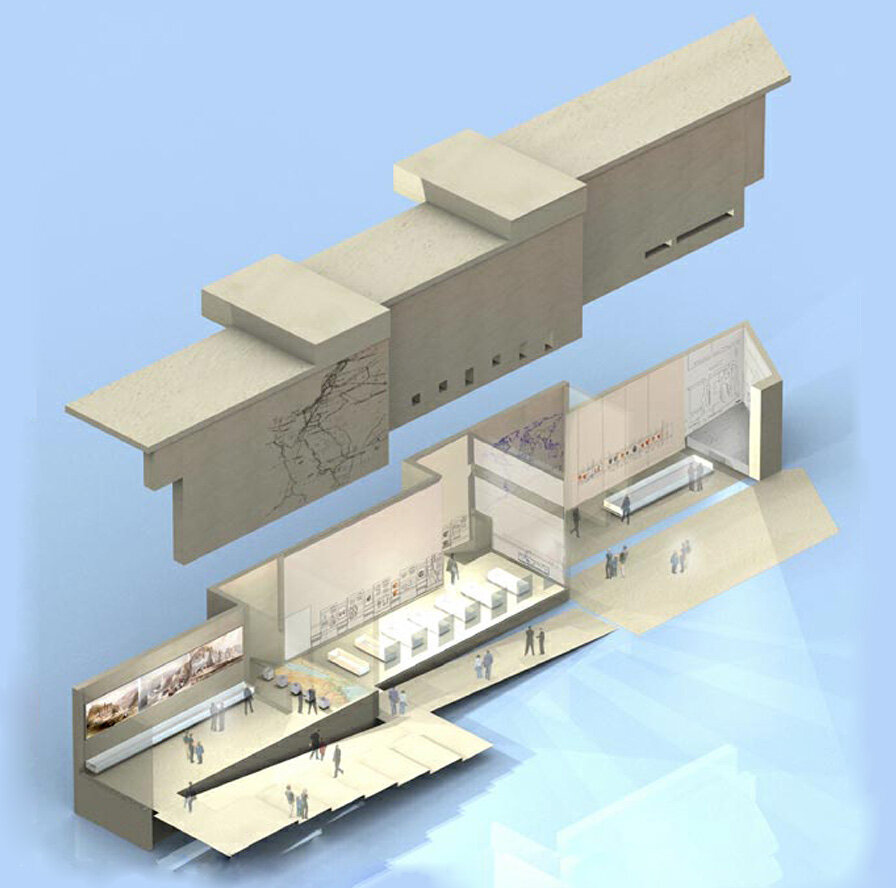GATEWAY TO PETRA
Imagine the thrill of discovering a lost city
It seems no work of Man's creative hand,
by labour wrought as wavering fancy planned;
But from the rock as if by magic grown,
eternal, silent, beautiful, alone!
Not virgin-white like that old Doric shrine,
where erst Athena held her rites divine;
Not saintly-grey, like many a minster fane,
that crowns the hill and consecrates the plain;
But rose-red as if the blush of dawn,
that first beheld them were not yet withdrawn;
The hues of youth upon a brow of woe,
which Man deemed old two thousand years ago,
match me such marvel save in Eastern clime,
a rose-red city half as old as time.
John Burgon 1845
Project Insight
Petra, the 'Rose City' and UNESCO World Heritage Site, is a magical place for the other worldliness of its topography and geology, that inspired the Nabataeans to carve the rock with such strength and artistic grace to form their sacred, hidden city.
Petra - in modern day Jordan - was strategically located and naturally defended, and so flourished as the epicentre of the Nabataeans’ power; a rich oasis of gardens, agriculture and cultural expression that reached its zenith of influence in the 1st century AD.
Their powerful legacy is now set against the ill-considered accumulation of piecemeal 20th/21st century additions and trappings at Wadi Musa - the entrance to the site - to meet the relatively recent demands of tourism.
We won the World Bank funded, international competition to devise a new visitor building to choreograph an elegant experience of arrival and movement between the modern and ancient worlds and re-establish Petra’s aura as the lost city; a place to be discovered anew.
Project Idea
Every visitor should be allowed to discover their own Petra. Each will come with diverse preconceptions of what they will see, informed by their own interests; from the professional archaeologist, to a tourist on a four hour stop in a hectic tour schedule, to a school trip to learn about the roots of civilized society in Jordan. Each must come away with an experience beyond expectation.
When access through media and technology has dulled our sensibility to live experience, any visit needs to be carefully managed to maintain suspense and surprise, while providing a breadth of choice that puts the visitor in control of what they do and how they do it.
To achieve this, we sought to prepare the visitor from the moment they leave their vehicle at Wadi Musa. A linear route leads through a series of events and spaces in the new Gateway building - a threshold or filter to pass through - purposefully shifting your sense of place and time, to leave the predictable world behind and transition from the present to the ancient world of Petra.
Project Design
We designed a building to feel unfamiliar – not like other buildings. It uses an abstraction of the real experience of the landscape as its cue, rather than any architectural style: it owes more to the rock shelters, the wadis, the surprise views, clefts and cool caves found in the Petra park. The visitor travels through this sequence and it is the experience of their journey that organises the spaces of the building.
In walking through Petra ourselves we tried to understand the needs of visitors on an excursion into the Archaeological Park in the hot, dry weather.
The site at Wadi Musa is characterised by the impressive rock formations that define its western edge and skyline, but existing scattered buildings interrupt the simplicity of the rocky outcrops.
The building design is flexible for the needs of the individual user. On arrival, visitors descend between stone walls on a route aligned on the Petra Gate axis and arrive dramatically into a sweeping oval entrance bowl, or amphitheatre. With only the distant horizon of sky, mountains and foliage visible from within this space, it cuts out the clutter and commerce of the surrounding scene.
When facilities need to be closed out of normal hours, or at certain times of the year, the building can act as a simple gateway. For those with limited time, there is a ‘fast track’ exhibition, housed within the thickness of the walls along the path edge. For visitors who have more time to explore, galleries leading off the ‘fast track’ ramp focus on the history and archaeology of the site, allowing more profound study before or after their visit to Petra.
The galleries wrap around a garden that displays the plants the Nabataeans cultivated, including frankincense and myrrh trees, from which incense is derived. The trade of this key element, used in religious ritual throughout the classical world, formed the foundation of the Nabataean’s great wealth.
The path then leads into a top-lit route that bypasses an existing road and delivers visitors out into the landscape of the Park to begin their exploration. The visitor building therefore, acts as a threshold between two places; the route into the building and out to the ancient world.






